RetroLisa
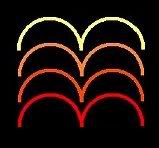 |
1970s
Music & Entertainment
part 2 | |
|
___________________________________________________________________________________________________________
|
|
|
RetroLisa
| ___________________________________________________________________ | __ | _____________________________ | _______ | Comedy
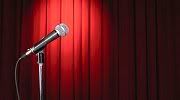
In the 1960s and 1970s, skit comedy and improvisation were the hottest new comedy trends. During this time, several new performing groups made these trends their specialty....Second City in Chicago (1959), Second City Toronto (1973) and The Groundlings in Los Angeles (1974).
The stand-up comedy scene was also growing and evolving. Hip young comics tackled modern topics, made witty observations about society and developed a relaxed performing style.
While the comedians were honing their craft, a new type of club was emerging to showcase them. The New York and Hollywood branches of The Improv opened in 1963 and 1975, and two branches of The Comedy Store opened in Los Angeles in 1972 and 1975. The Comedy Store was the first club to feature a lineup consisting solely of stand-up comedians.
Before the era of home video and cable TV, people got their comedy fix by listening to comedy albums. Known in the 1960s as party records, these recordings were funniest when listened to with friends. At a time when many cutting-edge comedians were being censored, this format allowed them to be as raunchy as they liked. Popular albums included those by George Carlin, Richard Pryor, Cheech & Chong, Steve Martin, Redd Foxx, Robin Williams, National Lampoon, Bill Cosby, Monty Python and Firesign Theater.
The Comedy Store
Second City
The Groundlings
Hip Album Comedy Of The 70s
50 Greatest Comedy Albums
| |
|
_________________________________________________
|
|
|
RetroLisa
| ___________________________________________________________________ | __ | _____________________________ | _______ | Radio
radio shows
- Between 1974 and 1982, the CBS Radio Mystery Theater had us cowering beneath the sheets every night. These hour-long tales of mystery and horror were introduced by E.G. Marshall and were acted out in old-time radio fashion by contemporary stars and radio veterans.
- The Dr. Demento Show debuted in California in 1970 and went nationwide in 1974. This weekly program featured a unique blend of comedy, novelty and parody recordings. On a typical show, it wasn't unusual to hear Spike Jones classics mixed in with new songs like Dead Puppies and Fish Heads. In 1976, a California teen named Al Yankovic submitted a tape of original parody songs featuring himself on accordion. The good Doctor played it on the air and "Weird Al" Yankovic's career was born.
- National Public Radio was launched in 1970. This publicly-funded network was the radio counterpart to television's PBS. One of the most popular shows on NPR was A Prairie Home Companion, which debuted in its modern form in 1974. These live broadcasts from fictional Lake Wobegon featured music, advertisements for non-existant products and homespun humor from host Garrison Keillor.
- The King Biscuit Flower Hour was a syndicated radio show featuring live concerts recorded in their entirety. It was first broadcast in 1973.
| |
Dr. Demento
CBS Radio Mystery Theater
A Prairie Home Companion
King Biscuit Flower Hour

CBS RMT Episodes Online
| music radio
early 1970s
When the decade began, the airwaves were dominated by AM stations and the Top 40 radio format. Programming was aimed at the teen market and consisted of commercials and current chart hits chosen from a tightly-controlled playlist. Smooth-talking DJs promoted concerts, gave away T-shirts and made personal appearances. Their wacky on-air antics made some of them famous in their own right.
A new radio format was launched in the early 1970s when the first oldies stations went on the air. The original baby boomers had reached adulthood and were experiencing their first pangs of nostalgia for the rock music they grew up with. America was also experiencing increased nostalgia for the 1950s, due to the popularity of the film American Graffiti. By nature, the definition of an oldie is constantly changing. In the 1970s, a song qualified as an oldie if it was recorded in the 1950s or 1960s.
FM stations catered to a smaller audience of audiophiles by playing jazz, classical music and progressive rock. For the old folks, beautiful music stations played generic elevator music. FM station managers generally placed fewer restrictions on their DJs, which allowed the freeform radio format to thrive here. The FM industry was still regarded as a minor player in the radio world, and had a reputation for being either stuffy and boring or avant-garde and experimental.
late 1970s
Change was in the air in the mid 1970s. Mainstream stations began to move their operations to the FM band, where they could broadcast their content in higher quality and stereo. The AM industry began to fall behind, while the FM industry adopted the playlists and tighter formats once found exclusively on AM. Everything came full circle in 1978, when FM listenership surpassed AM for the first time.
WLS: The Rock Of Chicago
Casey Kasem's "American Top 40"
WCFL In Chicago
WLS Music Radio Surveys
Oldies Radio
WABC: Musicradio 77
Wolfman Jack
Casey Kasem
Rick Dees
Frankie Crocker
Larry Lujack
Allison Steele, The Nightbird
John Records Landecker
| |
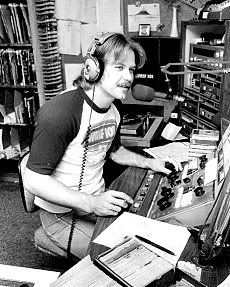
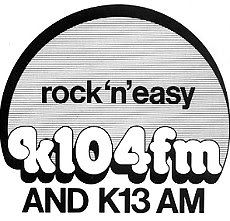
|
_________________________________________________
|
|
|
RetroLisa
| ___________________________________________________________________ | __ | _____________________________ | _______ | Live Entertainment
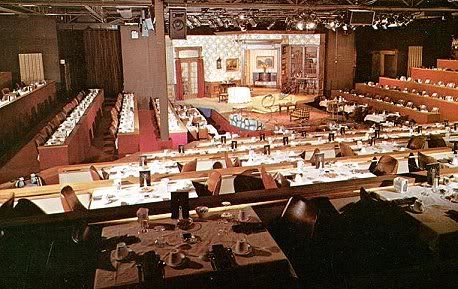
dinner theater
A dinner theater is an entertainment venue where guests can enjoy a restaurant meal and a professional theatrical performance. In most locations, the meal is served prior to showtime at tables surrounding the stage. The term has also been used to describe theaters that offer dinner packages in adjacent restaurants.
In the 1950s, the first locations to call themselves dinner theaters offered separate dinner packages. The first dinner theater to combine the meal and play in the same room was the Candlelight Dinner Playhouse, which opened near Chicago in 1961. Dinner theaters were at the peak of their popularity in the 1970s.
The plays tended to feature faded movie and TV stars who turned to the dinner theater circuit to keep their careers alive. The plays themselves were also a bit faded, relying on tame productions with proven track records and seldom offering anything new and fresh. The stars, not the plays, were the big draw here. In the 1970s, you could see stars like Bob Denver, George Hamilton, Eva Gabor, Lana Turner, Ann B. Davis and Abe Vigoda on a stage near you.
In addition to single theaters, there were some popular dinner theater chains in the 1970s. The Barn Dinner Theater had 27 locations in seven states. The Windmill Dinner Theater had locations in Dallas, Houston and Scottsdale, Arizona. The Beef & Boards Dinner Theater was also a popular chain.
In 1976, there were 147 professional dinner theaters in the United States.
| | 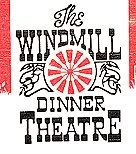
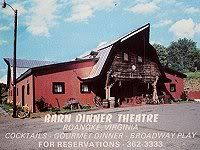
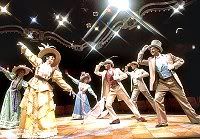
|
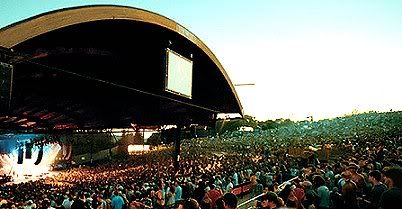
in concert
In the old days, rock musicians generally performed in small venues, such as discotheques, music halls and school gymnasiums. Large concerts and festivals were the exception, rather than the rule. If a large venue was needed, a football stadium or empty field was pressed into service.
This changed in the 1970s, when rock music became big business and concert tours became huge undertakings requiring corporate sponsorship. Large theaters increased in number to showcase the bands and their massive sound systems and light shows. The new supergroups of the era were capable of attracting thousands of fans to each show. This phenomenon became known as arena rock.
In the 1970s, the need to accommodate large crowds resulted in the birth of the modern outdoor pavilion. This type of theater had a covered seating area near the stage and cheap lawn seating on a hill in the rear. While older outdoor venues generally had a capacity of 3,000 people, a large pavilion like Alpine Valley had room for 37,000 fans. It's a design that we still see today.
Madison Square Garden (1968)
Alpine Valley (1977)
Red Rocks Amphitheatre
Chicago Stadium
Wolf Trap (1971)
Blossom Music Center (1968)
Pine Knob (1972)
1970s Outdoor Rock Concerts
World Series Of Rock
on stage
In the 1970s, singers had to master the technique of holding the microphone cord. Cordless technology was developed in the 1950s, but cordless microphones wouldn't be widely used on the stage until the 1980s.
| |
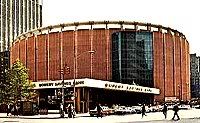
In New York City, the fourth Madison Square Garden opened in 1968. It was a very popular place for concerts in the 1970s.
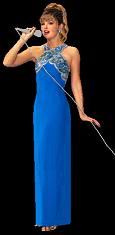
|
_________________________________________________
|
|
|
RetroLisa
| ___________________________________________________________________ | __ | _____________________________ | _______ | Home Video
film
Commercial films were first made available for home viewing in the 1910s. The introduction of 16mm film (1923), 8mm film (1932) and Super 8 film (1965) made the hobby more affordable and increasingly popular among film buffs. Some theatrical films were released in single-reel condensed versions for home viewing.
The adult film industry took full advantage of the privacy afforded by home video. Between the 1950s and 1970s, renting movie projectors and stag films for bachelor parties was a popular practice.
Camera specialty shops offered films and projectors for sale or rent. Most movies during this time were purchased by mail.
videocassette
Movie studios jumped on the videocassette bandwagon in 1972. That year, Columbia Pictures released several titles on videocassette for the new AVCO Cartrivision system, which went out of business a year later. In 1976, after the successful introduction of the VCR, Paramount released their movie library on videocassette. 20th Century-Fox released 50 titles on video in 1977, and Columbia Pictures released 20 titles in 1979.
In 1977, Magnetic Video Corporation was the first company to license and sell movies on videocassette. Starting with 50 titles from 20th Century-Fox, they sold the movies by mail through their Video Club Of America. Membership was $10, and each movie sold for $49.95.
The first video rental shop also appeared in 1977. That year, Video Cassette Rentals opened in Los Angeles, renting movies that were purchased from the Video Club Of America. An annual membership cost $50, and video rentals were $10 per day. By 1979, there were 42 stores in the chain, which had changed its name to Video Station.
In 1978 and 1979, the field of video stores continued to grow. In 1978, new stores included Movies Unlimited in Philadelphia, Videoland in Dallas, and the Video Movie Club Of Springfield in Illinois. Fotomat added a video rental service in 1979, with 131 titles that could be ordered by phone for pickup the next day. Also in 1979, a movie theater near my home added an Audio Video Center where movies could be purchased for $35.
laserdisc
The first laserdisc video player was introduced in 1978. That same year, a handful of movie titles were released for purchase under the MCA DiscoVision label. They included Jaws, The Birds, 1941, American Graffiti, Saturday Night Fever, Going My Way and Bride Of Frankenstein. Disney released a limited number of films and cartoon compilations on laserdisc in 1978 and 1979.
Movies Unlimited
History Of Home Video
Video Cassette Rentals
| | 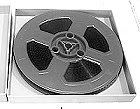
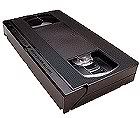
|
_________________________________________________
|
|
|
